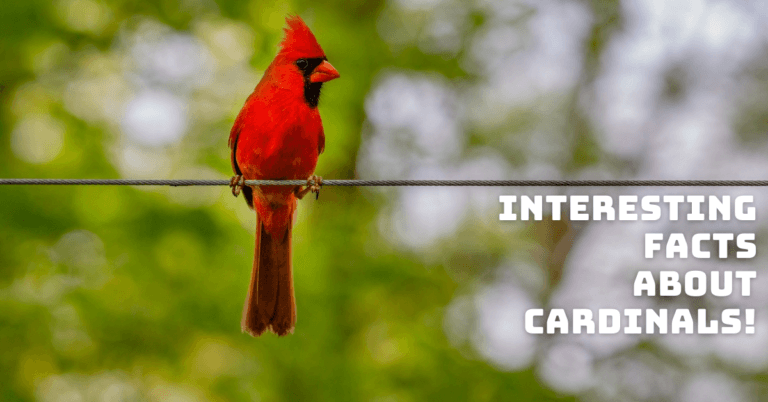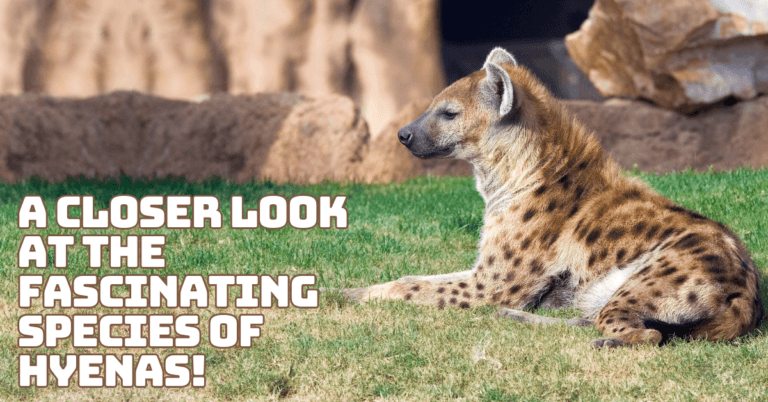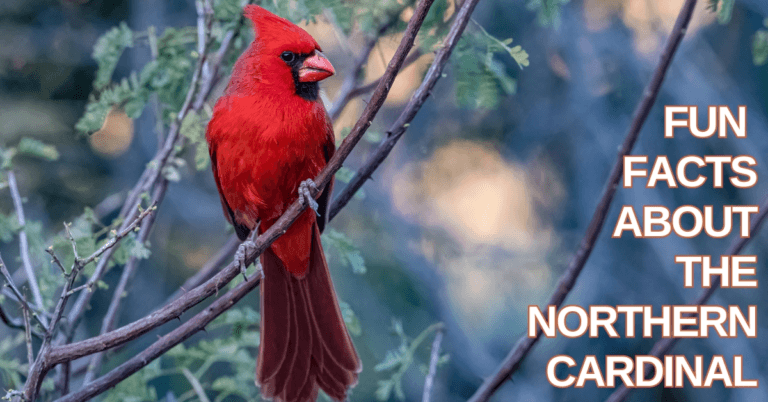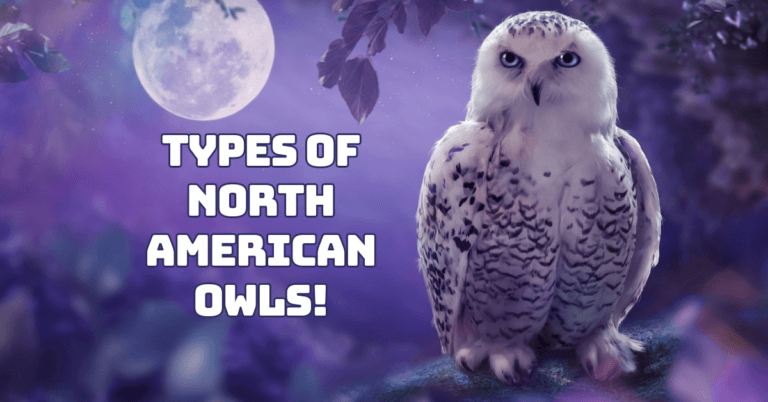Interesting Wildlife Species
Interesting Wildlife Species: Unravel The Secrets Of The Animal Kingdom
Welcome to the fascinating world of the most interesting wildlife species! Our planet is teeming with many animals and plants that inhabit diverse ecosystems, from lush rainforests to vast oceans, deserts to grasslands.
Wildlife encompasses many organisms, including mammals, birds, reptiles, amphibians, fish, insects, and countless other life forms.
These species are essential to preserving the delicate balance of our ecosystems and make significant and insignificant contributions to the operation of our planet.
We shall set out on an adventure to discover the wonders of wildlife species in this article, examining their classifications, ecological significance, conservation efforts, and more.
Join us as we explore the richness and diversity of the natural world and learn about the complex relationships that keep life on Earth possible.
Classification Of Wildlife
Wildlife encompasses many species, each belonging to specific taxonomic groups and classifications. Each group has its fascinating characteristics and diversity within the classification of wildlife.
These classifications provide a framework for understanding wildlife species' incredible diversity and unique characteristics within the animal kingdom.
Exploring wildlife classifications unveils the animal kingdom's astonishing adaptability, beauty, and complexity.
1. Mammals
Mammals are characterized by their warm-blooded nature, the presence of hair or fur, and the ability to nurse their young with milk.
They include familiar creatures like lions, elephants, and dolphins. Mammals, for instance, can range from tiny bats to massive whales, adapting to various environments and lifestyles.
2. Birds
Birds are distinguished by their feathers, beaks, and the ability to fly. They encompass many species, from majestic eagles and colourful parrots to tiny hummingbirds.
Birds exhibit an incredible array of colours, patterns, and behaviours, from the majestic soaring of eagles to the intricate dances of birds of paradise.
3. Reptiles
Reptiles like snakes, turtles, and crocodiles are cold-blooded and have scales or bony plates covering their bodies.
Reptiles showcase remarkable adaptations, such as the ability of certain snakes to swallow prey larger than their heads or the incredible camouflage of chameleons.
4. Amphibians
Amphibians, like frogs, toads, and salamanders, are cold-blooded but spend part of their lives in water and on land.
During their life cycles, they undergo incredible transformations, starting as aquatic larvae before transitioning into terrestrial adults.
5. Fish
Fish in freshwater and marine environments possess gills and fins, enabling them to live and breathe underwater. Fish display various shapes, sizes, and ecological niches, from fast-swimming tuna to bottom-dwelling flatfish.
6. Invertebrates
Lastly, invertebrates include diverse animals without backbones, such as insects, spiders, crustaceans, and mollusks. Invertebrates, which constitute the majority of animal species, demonstrate incredible diversity in form and function, from the intricate structure of butterfly wings to the intricate web-building of spiders.
Exploring Wild Animal Species
Wild animals encompass many species, each uniquely adapted to its natural habitat. They inhabit diverse ecosystems worldwide, from the depths of the oceans to the highest mountains and from dense forests to arid deserts.
Here are some details about various wild animal species:
1. Lions (Panthera Leo)
Lions (Panthera leo) are majestic and powerful big cats native to the savannas and grasslands of Africa.
As a prominent wildlife species, they are characterized by their iconic manes, with males having impressive hairs that vary in colour and size, indicating their age and status.
Lions live in social groups called prides, which typically consist of several related females, their offspring, and a few dominant males.
As apex predators, lions play a vital role in their ecosystems by regulating herbivore populations and contributing to the balance of the food chain.
They are highly skilled hunters and primarily prey on herbivores such as wildebeests, zebras, and buffalo.
Despite their status as apex predators, lions face significant conservation challenges. Their populations have declined due to habitat loss, human- wildlife conflict, and poaching.
As a result, the International Union for Conservation of Nature (IUCN) has designated lions as a “Vulnerable” species.
Conservation efforts are critical to safeguarding these magnificent creatures and preserving their habitats to ensure their survival in the wild.
Various organizations and initiatives are working tirelessly to protect and conserve lion populations and raise awareness about their importance in the ecosystem.
2. Elephants (Loxodonta and Elephas)
Elephants belonging to the genera Loxodonta (African elephants) and Elephas (Asian elephants) are the largest land animals on Earth.
They are instantly recognizable by their long trunks, large ears, and, in some cases, imposing tusks. Elephants are highly intelligent and emotional creatures with complex social structures.
They form tight-knit family groups led by a matriarch, which includes adult females, their offspring, and sometimes young adult males.
African elephants are found in various habitats across the African continent, while Asian elephants inhabit forests and grasslands in parts of Asia.
Both species play a crucial role in their ecosystems as ecosystem engineers, shaping landscapes and promoting biodiversity. They are also considered keystone species, influencing the survival of other species in their environment.
Despite their significance, elephants face numerous threats, including habitat loss, poaching for ivory, and human- wildlife conflict.
The International Union for Conservation of Nature (IUCN) has designated African and Asian elephants as “Endangered” species.
To ensure the continued existence of these majestic animals in the wild, conservation efforts concentrate on preserving their natural habitats, implementing anti-poaching measures, and spreading knowledge about the significance of coexisting with them.
3. Tigers (Panthera tigris)
Tigers (Panthera tigris) are awe-inspiring big cats known for their striking appearance with vibrant orange coats and bold black stripes.
They are among the largest cat species and are renowned for their strength and agility. Tigers predominantly inhabit forests across various Asian regions, including the Indian subcontinent and Southeast Asia.
As solitary hunters, tigers rely on stealth and ambush tactics to capture their prey, which includes a variety of ungulates such as deer, wild boar, and buffalo.
Unfortunately, tigers face severe conservation challenges, primarily due to habitat loss caused by deforestation, human encroachment, and rampant poaching for their body parts, which are sought after in traditional medicine and illegal wildlife trade.
Tigers are classified as “Endangered” by the International Union for Conservation of Nature (IUCN).
Conservation efforts involve protecting and restoring tiger habitats, implementing anti-poaching measures, and raising awareness about preserving these majestic creatures for future generations.
4. Gray Wolves (Canis lupus)
Gray wolves (Canis lupus) are versatile and resilient carnivores in many habitats, including forests, tundra, and deserts across North America, Eurasia, and parts of the Middle East.
These magnificent creatures exhibit a social structure centred around family units known as packs, where the alpha pair leads and coordinates the group's activities.
As apex predators, gray wolves play a vital ecological role by helping to regulate prey populations, which, in turn, impacts the overall health and balance of ecosystems. They primarily prey on ungulates such as deer, elk, and moose.
Historically, gray wolves faced significant threats due to habitat loss, persecution, and hunting, which led to their decline in many regions.
However, conservation efforts, including legal protection and reintroduction programs, have resulted in population recoveries in certain areas.
Gray wolves are listed as “Least Concern” on the International Union for Conservation of Nature (IUCN) Red List, but the status may vary depending on specific subpopulations and regions.
Conservation efforts continue to be critical in ensuring the survival and coexistence of this iconic species with human communities.
5. Giant Pandas (Ailuropoda melanoleuca)
Giant pandas (Ailuropoda melanoleuca) are enchanting creatures found in the bamboo forests of China. Their diet is exclusively herbivorous, consisting mainly of bamboo shoots, leaves, and stems.
Despite their endearing and cuddly appearance, giant pandas are solitary animals, preferring a reclusive lifestyle in dense bamboo forests.
On the Red List of the International Union for Conservation of Nature (IUCN), giant pandas are categorized as being in “Endangered” conservation status.
The primary causes of their decline are habitat loss and fragmentation brought on by human activities like deforestation and increased agricultural production.
Poaching and climate change have also contributed to their vulnerability. Conservation efforts, including protected reserves and breeding programs, have been crucial in conserving this iconic species.
Despite barriers, concerted efforts can be made to safeguard the survival of giant pandas and protect their natural habitats for future generations.
6. Great White Sharks (Carcharodon carcharias)
Great white sharks (Carcharodon carcharias) are awe-inspiring ocean predators worldwide, from coastal regions to open waters.
They are known for their striking appearance, featuring a robust body, powerful jaws, and distinctive white underbelly, contrasting with their grayish-blue dorsal surface.
As apex predators, great white sharks play a crucial role in maintaining the balance of the marine ecosystem by regulating prey populations.
They primarily feed on marine mammals such as seals, sea lions, fish, and other aquatic species. Despite their reputation as fierce hunters, great white sharks face conservation challenges.
They are classified as “Vulnerable” on the International Union for Conservation of Nature (IUCN) Red List due to threats such as overfishing, accidental catches in fishing gear (bycatch), and habitat degradation.
Protective measures, like marine protected areas and sustainable fishing practices, are essential to safeguard these magnificent creatures and ensure their continued presence in our oceans.
Public awareness and understanding are also crucial to dispel misconceptions about great white sharks and promote conservation efforts supporting the well-being of the species and marine ecosystems.
7. Chimpanzees (Pan troglodytes)
Chimpanzees (Pan troglodytes) are fascinating and intelligent primates uniquely positioned as our closest living relatives in the animal kingdom.
They share approximately 98% of their DNA with humans, making them invaluable subjects for studying evolution and behaviour.
Chimpanzees are native to the forests and woodlands of Central and West Africa, where they thrive in diverse habitats ranging from rainforests to savannas.
These remarkable creatures are known for their sophisticated cognitive abilities, such as problem-solving, tool use, and communication through gestures and vocalizations.
They live in complex social structures, living in communities led by alpha males and engaging in intricate social behaviours.
The conservation status of chimpanzees varies depending on their specific geographic regions and subspecies.
Overall, chimpanzees are classified as “Endangered” on the IUCN Red List, with populations facing significant threats due to habitat loss, deforestation, illegal poaching, and human disease transmission.
Conservation efforts aim to protect their natural habitats, prevent illegal hunting, and raise awareness about preserving these magnificent beings and their fragile ecosystems.
8. Bald Eagles (Haliaeetus leucocephalus)
Bald Eagles (Haliaeetus leucocephalus) are majestic and emblematic raptors native to North America.
These large birds of prey are easily recognizable by their striking appearance, featuring a snowy white head and tail feathers contrasting with their dark brown body.
They are renowned for their keen eyesight, strong talons, and impressive hunting skills. Bald eagles are primarily fish eaters, often spotted near lakes, rivers, and coastal areas where they dive and snatch fish from the water's surface with remarkable precision. Additionally, they may feed on waterfowl, small mammals, and carrion.
Once facing a significant decline due to habitat loss, hunting, and the use of harmful pesticides, bald eagles have made a remarkable recovery, thanks to conservation efforts and legal protection.
Their conservation status has improved over the years, and they have been downlisted from “Endangered” to “Least Concern” on the IUCN Red List.
However, continued conservation efforts are essential to ensure these magnificent birds' well-being and preserve their habitats in the wild.
9. Red Kangaroos (Macropus rufus)
Red Kangaroos (Macropus rufus) are iconic marsupials in Australia. As the largest marsupials globally, they are well-adapted to the continent's diverse and often arid landscapes.
Red kangaroos are known for their striking reddish-brown fur, powerful hind legs, and long, muscular tails.
Their unique locomotion involves hopping, which allows them to cover vast distances efficiently and conserve energy in their harsh habitat. During their bounding movements, they can reach up to 35 miles per hour.
Red kangaroos are herbivores and primarily graze on grasses and vegetation. They have evolved specialized adaptations to survive in arid regions, including obtaining moisture from their food and reducing their need for water.
Regarding conservation status, red kangaroos are currently classified as a “Least Concern” species on the IUCN Red List.
They have a stable population and a wide range across Australia, where they are protected in national parks and conservation areas.
However, ongoing monitoring and conservation efforts are essential to ensure their long-term survival, especially in the face of potential habitat loss and human- wildlife conflicts.
10. Koalas (Phascolarctos cinereus)
Koalas (Phascolarctos cinereus) are beloved marsupials native to the eucalyptus forests of Australia.
With their fluffy ears and distinctive round noses, they have an adorable and endearing appearance, earning them the nickname “koala bears.” However, they are not bears but marsupials related to kangaroos and wombats.
Koalas' specialized diet consists almost exclusively of eucalyptus leaves, which provide them with the necessary nutrients and moisture.
They have a slow metabolic rate and spend much of their time sleeping and resting in trees, conserving energy from their low-calorie diet.
Despite their popularity, koalas face significant threats to their survival. Deforestation, habitat loss, and the impact of climate change have resulted in declining populations in certain regions.
The IUCN Red List attributes them to the category “Vulnerable” as a result. Various conservation efforts, including habitat protection and wildlife corridors, are essential to preserve these iconic Australian marsupials for future generations.
11. Orangutans (Pongo spp.)
Orangutans (Pongo spp.) are fascinating and highly intelligent primates native to the rainforests of Borneo and Sumatra, part of Southeast Asia. They are among the four great ape species, including gorillas, chimpanzees, and bonobos.
Orangutans are known for their distinctive red-orange fur, long arms, and great strength. They are primarily arboreal, spending much of their time in trees, building nests for sleeping and foraging.
Orangutans are primarily frugivorous, meaning their diet mainly consists of fruits, but they also consume leaves, insects, and sometimes small vertebrates.
Unfortunately, orangutans face severe threats to their survival. Habitat destruction due to deforestation, illegal hunting, and the pet trade have significantly declined their populations.
As a result, both Bornean and Sumatran orangutans are categorized as “Critically Endangered” on the IUCN Red List.
The existence of these amazing and threatened monkeys depends on conservation initiatives like defending their habitats and stopping the illegal trade.
12. Jaguars (Panthera onca)
Jaguars (Panthera onca) are magnificent big cats native to the Americas. They are renowned for their stunning coat patterns, which are marked with distinctive black rosettes and spots.
Jaguars are the third-largest big cats in the world, after tigers and lions. They are highly skilled hunters known for their powerful jaws, which allow them to deliver a crushing bite to their prey.
These elusive and solitary cats mainly inhabit dense rainforests, swamps, and grasslands in Central and South America. They are territorial animals with large home ranges that they fiercely defend.
Despite their adaptability and prowess as predators, jaguars face significant threats to their survival. Habitat loss due to deforestation, human-wildlife conflict, and poaching are major factors impacting their populations.
As a result, jaguars are listed as “Near Threatened” on the IUCN Red List. Conservation efforts, including protected areas and anti-poaching initiatives, are vital for the long-term survival of these magnificent and ecologically important big cats.
Conclusion
In conclusion, wildlife species play a vital role in our ecosystems and contribute to the overall health and balance of the natural world.
They are diverse and fascinating, with unique adaptations and characteristics that allow them to survive in various habitats.
However, wildlife populations face numerous challenges, including habitat loss, climate change, poaching, and human- wildlife conflicts.
Protecting wildlife species is not only a moral and ethical responsibility but also crucial for maintaining biodiversity and the overall health of our planet.
By valuing and conserving wildlife, we can preserve natural ecosystems and create a sustainable future where humans and wildlife coexist harmoniously.
I trust you enjoyed this article on Interesting Wildlife Species: Unravel The Secrets Of The Animal Kingdom. Please stay tuned for more blog posts shortly. Take care!
JeannetteZ
>>>Please click here to read my all-inclusive article about Why Is Wildlife Important And How Can We Protect It<<<
Your Opinion Is Important To Me
Do you have thoughts, ideas, or questions? I would love to hear from you. Please leave your questions, experiences, and remarks about the Interesting Wildlife Species: Unravel The Secrets Of The Animal Kingdom article in the comments below. You can also email me at Jeannette@Close-To-Nature.org.
Disclosure
This post may contain affiliate links. As an Amazon Associate and other affiliate programs, I earn from qualifying purchases at no extra cost to you. Please read my full affiliate disclosure.
You might also enjoy these blog posts:
Best Ways Massage Can Benefit Health
Best Ways To Create A Bird-Friendly Garden
Common Backyard Birds In The USA
Interesting Yellow-Bellied Sapsucker Facts





















